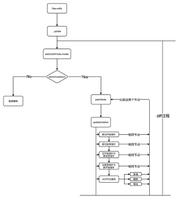Python Pandas - 计算两个 Index 对象的对称差异并对结果进行排序
要计算两个 Index 对象的对称差异并取消对结果的排序,请使用symmetric_difference()Pandas 中的方法。要取消排序,请使用sort参数并设置为False。
首先,导入所需的库 -
import pandas as pd
创建两个 Pandas 索引 -
index1 = pd.Index([50, 30, 20, 40, 10])index2 = pd.Index([40, 10, 60, 20, 55])
显示 Pandas index1 和 index2 -
print("Pandas Index1...\n",index1)print("Pandas Index2...\n",index2)
执行对称差分。使用值为 False 的“sort”参数取消对结果的排序 -
res = index1.symmetric_difference(index2, sort=False)
示例
以下是代码 -
import pandas as pd输出结果# 创建两个 Pandas 索引
index1 = pd.Index([50, 30, 20, 40, 10])
index2 = pd.Index([40, 10, 60, 20, 55])
# 显示 Pandas index1 和 index2
print("Pandas Index1...\n",index1)
print("Pandas Index2...\n",index2)
# 返回 Index1 和 Index2 中元素的数量
print("\nNumber of elements in index1...\n",index1.size)
print("\nNumber of elements in index2...\n",index2.size)
# 执行对称差分
# Unsort the result using the "sort" parameter
res = index1.symmetric_difference(index2, sort=False)
# 两个指标的对称差异
print("\nThe index1 and index2 symmetric difference with unsorted result...\n",res)
这将产生以下输出 -
Pandas Index1...Int64Index([50, 30, 20, 40, 10], dtype='int64')
Pandas Index2...
Int64Index([40, 10, 60, 20, 55], dtype='int64')
Number of elements in index1...
5
Number of elements in index2...
5
The index1 and index2 symmetric difference with unsorted result...
Int64Index([50, 30, 60, 55], dtype='int64')
以上是 Python Pandas - 计算两个 Index 对象的对称差异并对结果进行排序 的全部内容, 来源链接: utcz.com/z/345674.html









